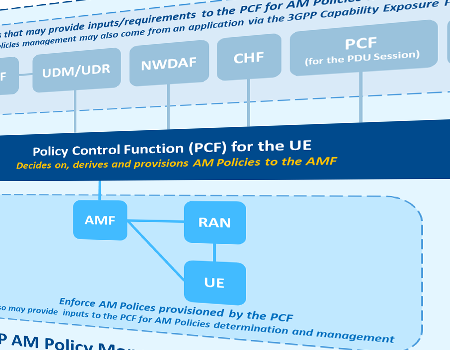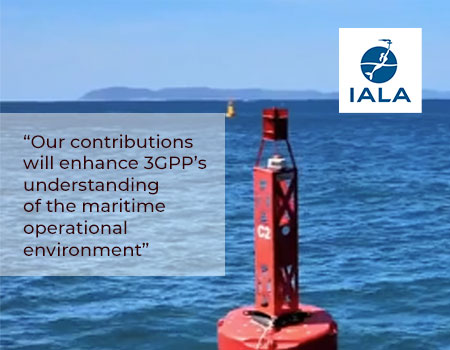By Juan Montojo, Rapporteur for the RAN1-led study on AI/ML for NR Air Interface, Qualcomm Inc.
First published Oct. 2022, in Highlights Issue 05
Before Rel-18, Artificial Intelligence (AI) and Machine Learning (ML) related projects in 3GPP focused on enabling network automation or data collection for various network functions.
The Network Data Analytics Function (NWDAF) was introduced in Rel-15 providing network slice analysis capabilities. It was later expanded to providing data collection and exposure in 5G core in Rel-16, and to enable UE application data collection in Rel-17.
Similarly, projects on Self Organizing Network (SON) and Minimization of Drive Tests (MDT) have been defining data collection procedures for various NR features over releases starting from Rel-16. How the network would use that collected data has always been left to implementation.
In Rel-17 a RAN3-led study on further enhanced data collection investigated the high-level principles of RAN intelligence enabled by AI. This project laid out the functional framework for RAN intelligence and the benefits of AI enabled NG-RAN examining various use cases. The Technical Report (TR) of this study can be found in 37.817 and constitutes an excellent reference for the findings of the project. This study led to the approval of a Rel-18 normative project on AI/ML for NG-RAN focusing on enhancements to data collection and signaling to support AI/ML based Network Energy Savings, Load Balancing and Mobility Optimizations.
The Rel-18 RAN1-led study on AI/ML for NR Air Interface, as the central subject of this article, explores the benefits of augmenting the air interface with features enabling improved support of AI/ML based algorithms for enhanced performance and/or reduced complexity or overhead.
The project description has identified three promising areas which will be used as a pilot to deepen the understanding of the solution space and corresponding performance evaluation comparisons with pertinent non-AI/ML based implementations and across companies:
- Channel State Information (CSI) For CSI enhancements, frequency domain compression has already been agreed, with other enhancements, e.g., time-domain prediction, being still considered.
- Beam Management (BM) Spatial and temporal prediction seem to be promising areas of focus.
- Positioning Direct AI/ML positioning (e.g., fingerprinting) and AI/ML assisted positioning (e.g., the output of the AI/ML model inference is a new measurement and/or an enhancement of an existing measurement) are the most popular areas for further investigation.
The AI/ML model is assumed to be running at one of the two sides of the communication link, i.e., gNB or UE, for most of the use cases. However, the CSI use case will explore the possibility of having two-sided AI/ML model with a tight interplay between the UE and gNB. Whether and how that interaction will be enabled by the 3GPP is subject of discussion.
This project will also identify the relevant AI/ML notation and nomenclature which will be necessary for describing AI/ML models and their life cycle in conjunction with various levels of collaboration between the network and the user equipment, and including descriptions on training, inference, testing, and verification of the models. All those concepts will have to be investigated in light of their exposure to 3GPP specifications.
Performance evaluations and comparisons with a meaningful non-AI/ML baseline are an integral part of the project to measure the true potential of the AI/ML techniques. Clearly, there will be various Key Performance Indicators (KPIs) identified for the different use cases. In turn, AI/ML based techniques will be identified in terms of performance and associated complexity. Complexity, in addition to computational requirements, will relate to power consumption and memory utilization.
The ultimate objective of this study is the characterization of the specification impact that will enable the deployment and inter-operation of these AI/ML based techniques.
While specific AI/ML models are not expected to be specified and will be left to implementation, enabling AI/ML for air interface will require specification impacts at various levels which we briefly describe next.
In addition to the air interface enabling aspects involving physical layer and protocol areas, the interoperability and testability (e.g., requirements and testing frameworks) of such implementations is an important aspect that will also be considered. The possible need and implications for AI/ML processing capabilities definition will be also assessed during the study.
Physical layer aspects to study along with potential specification impact include, e.g., AI model lifecycle management (LCM), dataset construction for training, validation and test for the given use case, new signaling required to enable specific use cases, means for training and validation, assistance information, measurement, and feedback.
Protocol aspects to study along with potential specification impact include, e.g., capability indication, configuration and control procedures (training/inference), and management of data and AI/ML model, and collaboration level specific specification impact per use case.
Lively discussions are already taking place in areas such as AI/ML model training, i.e., offline vs. online, along with their actual meaning and feasibility. Also, the concept of model transfer has shown to be a controversial topic requiring more aligned understanding of the implications and consequences.
To conclude, this study item spanning the entire duration of Rel-18 is expected to provide a solid understanding of 3GPP’s role in enabling an improved support of AI/ML for air interface problems which is expected to lead to normative projects in future Releases of 5G-Advanced. At the same time, the findings of this project are expected to be leveraged in future generations of wireless systems that 3GPP will develop.
Further reading:
For details on the Study on Artificial Intelligence (AI)/Machine Learning (ML) for NR Air Interface (FS_NR_AIML_Air) see: RP-221348 and 3GPP TR38.843.


 Technology
Technology




